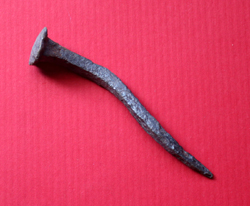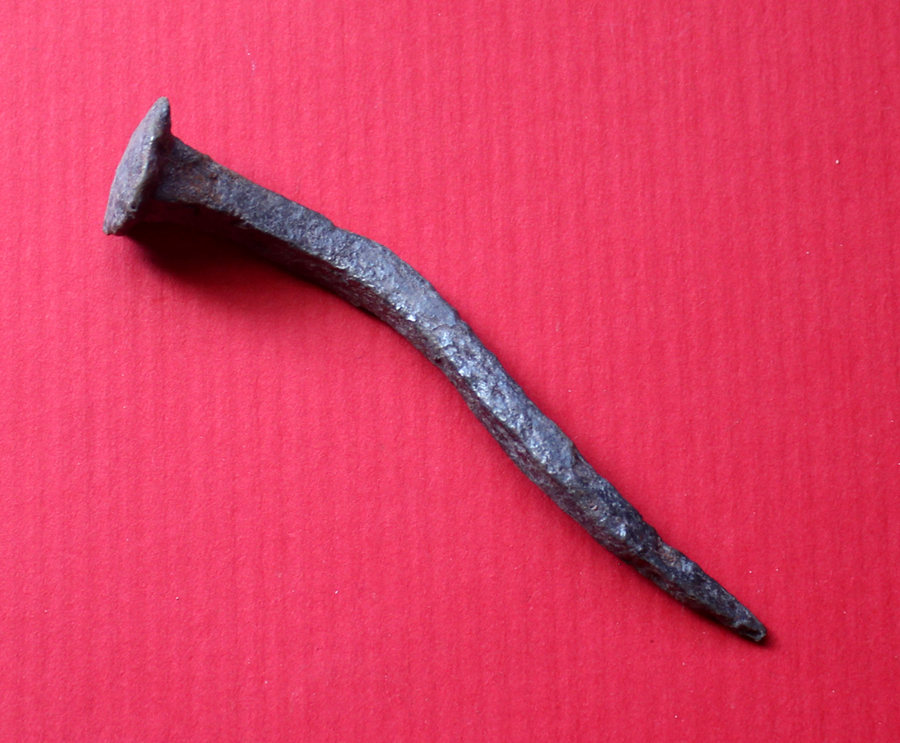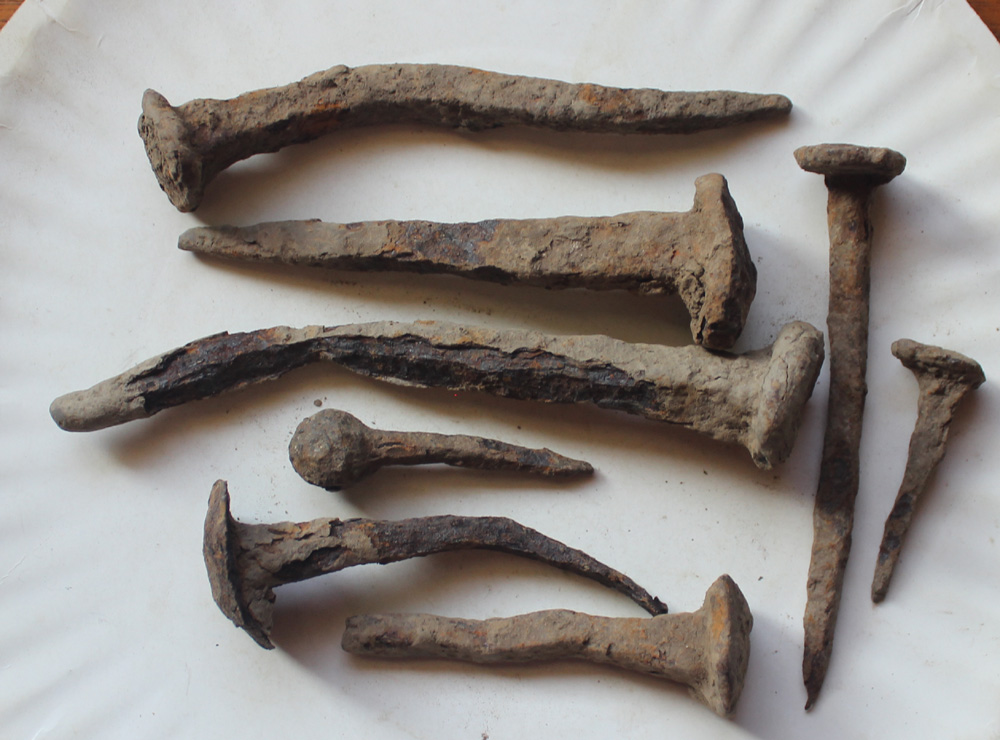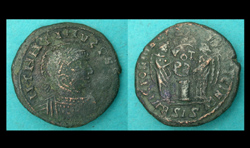


Ave!
Spike, Iron, Crucifixion size, ca. 1st-3rd Cent. AD
Iron alloy; 5 inches / 1.6 oz.
Con/ Cleaned and conserved to prevent further oxidation. (See the final photo for "As Arrived")
The history of crucifixion is nothing new and can be traced back to the Egyptians (Genesis 40:19) and the Persians (Esther 7:10)
Crucifixion was a punishment that was only for slaves or malefactors of the worst kind and Roman citizens were exempt from it.
The process of individual crucifixion had to have been horrific. It began by scourging with a whip that was usually embedded with nails or pieces of glass or bone to heighten the pain. Many died from the scourging before they got to the cross. The place of execution was always outside of cities (Acts 7:58, Hebrews 13:12) and the criminal was made to carry all or part of his cross and if he was unable then someone was pressed to carry it for him. The process of attaching the person to the cross was either that they were fastened to a cross piece that was already standing by ropes or they were fastened to the cross and then the cross was raised. The person was tied or nailed to the cross depending upon the method used by the soldiers who carried out the punishment. Death came from asphyxiation or pure exhaustion and if they were bound with thongs it might take days to die. The crucified one would not be able to raise himself up to allow his lungs to breath and that was hastened by the breaking of the legs (John 19:31). Usually the body was left to rot on the cross and this was done as a deterrent to those who entered the city. Crucifixion was capital punishment and the sight of the crosses to those who came into the city was a grim reminder of the justice that awaited those who engaged in criminality.
For instance, Marcus Licinius Crassus (ca. 72 BC), after putting down the slave revolt under Spartacus, six thousand slaves were captured by his troops and were crucified along the Appian Way, from Capua to Rome, 117 miles of stinking and rotting bodies. This was certainly a deterrent to any other slave revolts in Roman times and it never happened again.
Seller's Note/ Our spikes certainly had nothing to do with the crucifixion of Jesus Christ but seeing them you will understand why "Jesus wept."





